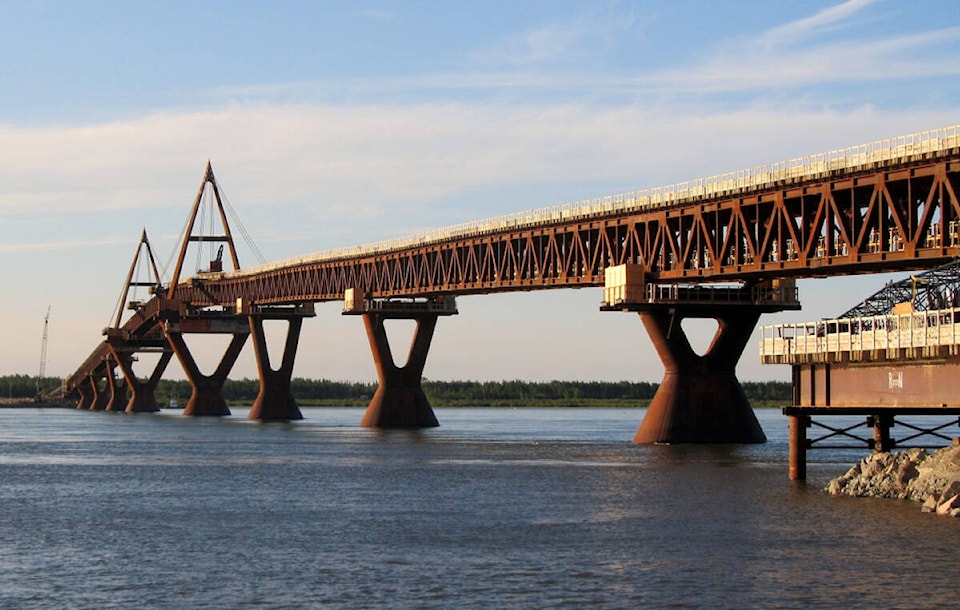Forty-five thousand tonnes of steel and concrete is suspended over the Mackenzie River.
That same Deh Cho Bridge still hangs over the heads of the territorial government a decade after it was completed.
The project was much ballyhooed because it provides year-round access between Yellowknife and the south. It replaced the Merv Hardie ferry and an ice crossing, and it allowed us to overcome the river’s freeze-up and break-up periods when no passage was possible, except by air.
However, the bridge has also been rife with controversy. It was originally pegged at $169 million. That total kept creeping up until the price tag reached $202 million.
The GNWT is still shelling out $9 million per year in interest on the one-kilometre span, which crosses the river near Fort Providence. Those interest payments can rise because they’re tied to the consumer price index, which has been escalating furiously. The territorial government’s bridge payments are expected to continue until 2046, by the way.
Bridge tolls generally bring in close to $4 million per year, but it was less in 2020 when the government temporarily waived tolls and permit fees for commercial truckers as a means of economic relief during the pandemic. Some funding has to be devoted to bridge maintenance too.
Then there were the lawsuits related to the project.
A couple of members of the Deh Cho Bridge Corp. claimed that they were owed $1.3 million for work they did on the project. The GNWT, after taking over construction duties in 2010, settled with the disgruntled individuals confidentially.
Just last week, on March 11, while members of the NWT Legislative Assembly were reviewing Department of Infrastructure capital investment expenditures, Frame Lake MLA Kevin O’Reilly spotted an item that he described as “some sort of a dispute over a letter of credit replacement fund for $2.75 million.”
Lo and behold he had stumbled upon another troubling legacy of the Deh Cho Bridge.
Finance Minister Caroline Wawzonek explained that the amount in question is “the resolution of a matter that arises out of some litigation pertaining to the Deh Cho Bridge construction” and added that “it does fully resolve the matter.”
The money is being paid to the Government of New Brunswick, Wawzonek told her colleagues in the assembly after further questioning from O’Reilly.
She also said the dispute arose between the contractor from New Brunswick — the now defunct Atcon Group — and the GNWT. Atcon was eventually removed as the bridge contractor due to a disagreement with the territorial government, and the New Brunswick provincial government provided a $13-million loan guarantee on the company’s behalf.
“After Atcon’s construction deficiencies are corrected, New Brunswick may receive some monies back,” New Brunswick’s conflict of interest commissioner wrote in a 2018 report.
So is this $2.75 million the amount owed back to the New Brunswick government? We cannot know for sure because Wawzonek cited the need for some confidentiality.
O’Reilly pointed out that these are taxpayer dollars, there’s a need for the GNWT to be accountable and he noted that the amount that the government sets aside for litigation contingencies has grown substantially.
Wawzonek rather casually responded, “There’s a lot of litigation that happens in large infrastructure projects, whether it’s a P3 (public-private partnerships) or otherwise. That is not uncommon that as large projects go, that they will often wind up in some sorts of disputes between the parties that are involved and if the GNWT is one of those parties, then we will at times be subject to those litigation disputes.”
And the public, apparently, will be subject to remaining partly or completely in the dark, unless sharp MLAs can spot budget line items that cry out for answers – but even then the answers lack detail.
And that’s not right.
